May 17, 2025 | 04:45 GMT +7
May 17, 2025 | 04:45 GMT +7
Hotline: 0913.378.918
May 17, 2025 | 04:45 GMT +7
Hotline: 0913.378.918
Dang Minh Hiep's model of raising eel without mud in Phu Khanh village (Ham My commune, Ham Thuan Nam district, Binh Thuan) is far from residential areas.
Here, on an area of 1,000m2, Mr. Hiep built a model of raising eels without mud in a cement tank, with a roof over the tank and fed entirely with industrial food. Treated water in raising eel is collected and taken to the pond to raise catfish and red snapper for surplus food.
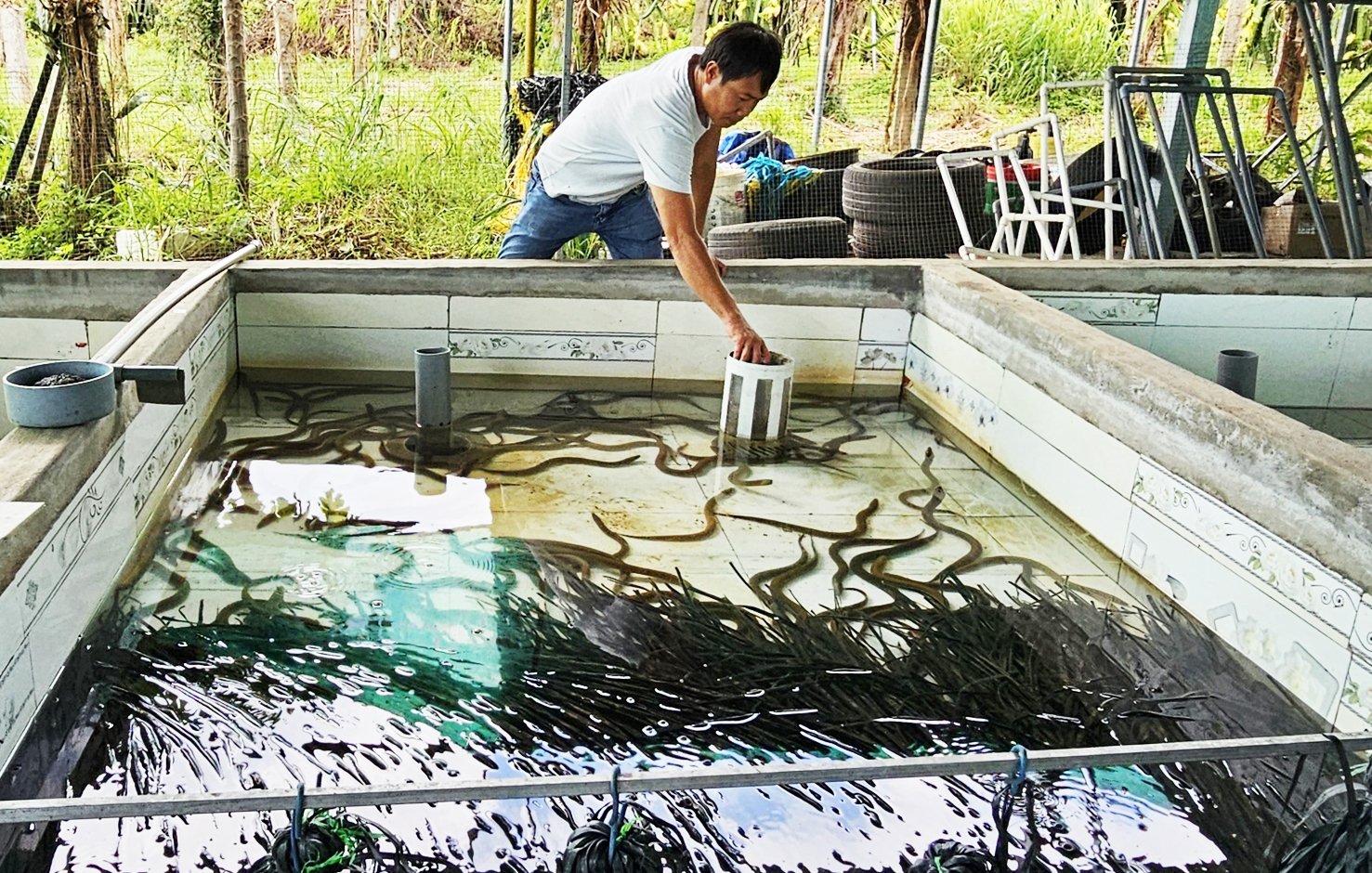
Model of raising eel without mud by Mr. Dang Minh Hiep in Ham My commune, Ham Thuan Nam district (Binh Thuan). Photo: KS.
Hiep said this is the model he learned through books, television, and social networks. In 2019, he started to order breeding stock in the Mekong Delta for trial farming. Initially, he encountered many technical difficulties, so he raised eels or suffered from fungal diseases and died, causing much loss.
To overcome this situation, he focused on learning the experience of raising eels from farmers in your province. In the process of raising, he has also accumulated and gained experience, so he can now grasp each stage of the eel's development.
Mr. Hiep has 24 plots for raising eels with sizes ranging from 3 - 6m2/cage. Hes he uses five small farming plots (3m2/plot) to nurse fingerlings. The remaining 6m2 cages are used to raise commercial eels and breed eels.
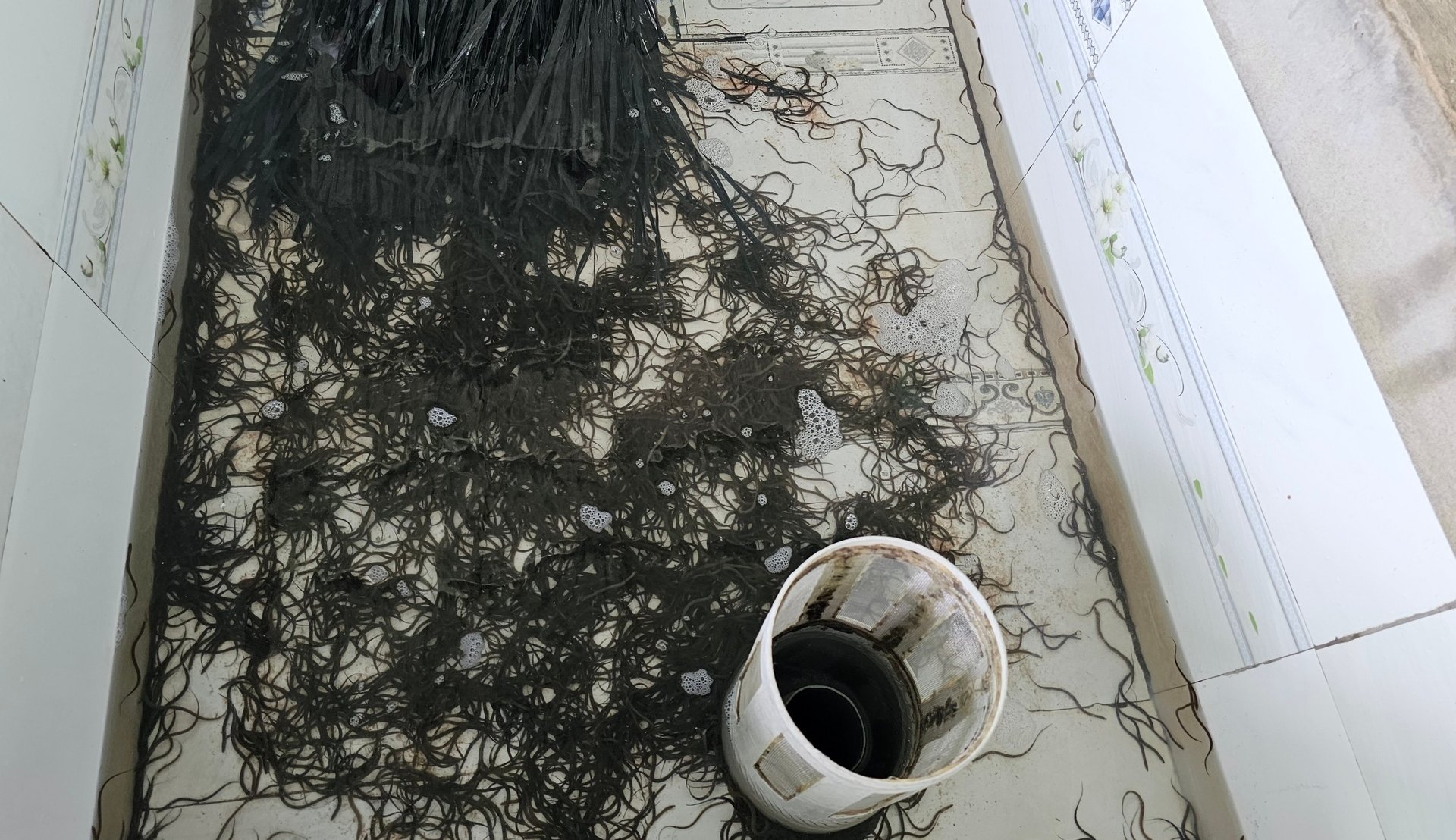
Mr. Hiep has now successfully produced seed eels to source seed actively. Photo: KS.
The common point of the tanks is that the inside and bottom are covered with ceramic tiles help to prevent the eels from being hurt or scratched. On the other hand, the bottom of the tank is designed with a drain to change water and clean it conveniently. To prevent eels from getting out through the drain, Hiep used a lid to seal it. While raising eels without mud, the tank always drops a plastic substrate to give the eels a place to hide.
According to Mr. Hiep, he changes clean water for raised eels every day before and after feeding to help the eels avoid bacterial invasion and promote good growth and development, fast growth, and less disease.
"I feed the eels completely with industrial food from childhood until harvest. As for the eel breed, I initially trained to eat bran powder (eel bran). Depending on the size, feed the eels with appropriate bran pellets (barramundi bran) when growing up", Hiep shared.
According to Mr. Hiep, from the day he grasped the technique of raising eels for reproduction and successfully hatching eel eggs, he took the initiative in breeding the breeds, helping the closed farming model. At the same time, it allows him to raise eels in a rolling way all year round.

Hiep's breeding eel farm. Photo: KS.
According to Mr. Hiep's experience, for eels to lay eggs with a high hatching rate and produce healthy eels, they must choose healthy, yellow, about 1.5 ounces in size. Eels that lay in the nest and check that the eggs are dark yellow are old enough. They will be brought to the incubation tank.
The process of incubating eel eggs is also simple. Pots and an oxygen aerator stimulate eel eggs to hatch more easily. The incubation time of eel eggs is about 4-5 days. After that, the baby eels are taken to the rearing tank for about 2-3 months to reach the size of the eels, and then they are raised for meat.
"Currently, each tank has a size of 6m2, and I raise meat eels from 8 to 10 months to reach the export size. At that time, eels reached a weight of 3-4 heads/kg, and each tank produced 3-4 quintals. With the price of meat eel about VND 140,000/kg, I sell 15-20 kg on average every day, after deducting the profit cost of VND 30.000 - 40.000/kg", shared Mr. Dang Minh Hiep.
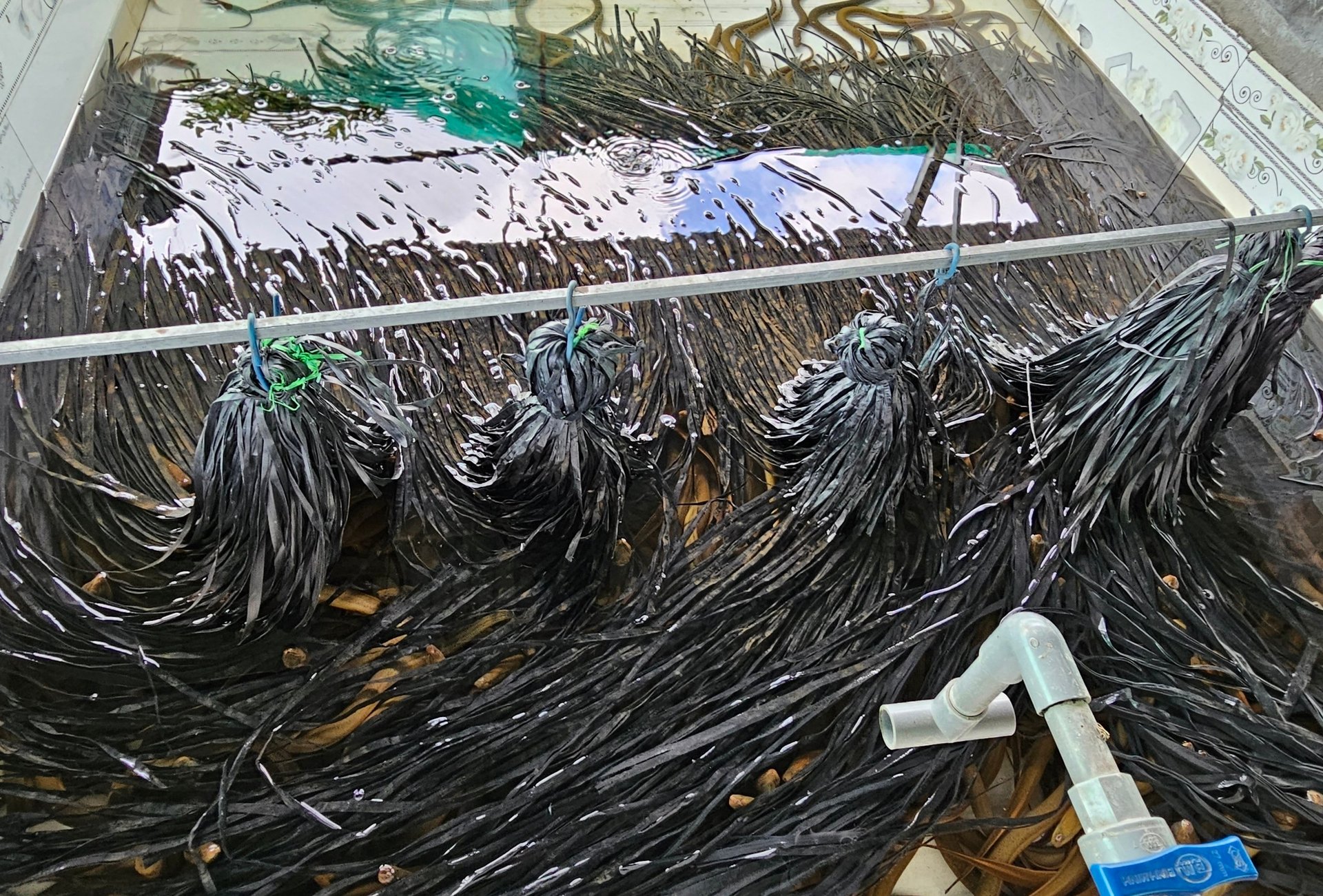
Eels raised for 8-9 months gain weight of 3-4 heads/kg. Photo: KS.
Mr. Hiep added that the market in Phan Thiet City (Binh Thuan) and restaurants and pubs all have a great demand for meat eels and all orders, but he cannot meet the current supply. Therefore, in the coming time, he will continue to replicate the model and improve the quality of eels to develop OCOP products.
Mr. Nguyen Ngoc Nguyen, Vice Chairman of Ham My Commune People's Committee, said that the whole commune has three households raising eels without mud in cement tanks very effectively. Soon, the locality will coordinate with professional agencies to disseminate and guide people in the commune to visit and learn this model if there is a need to raise it. Also, re-organize the production of existing models for more effective association and consumption.
Translated by Tu Quyen
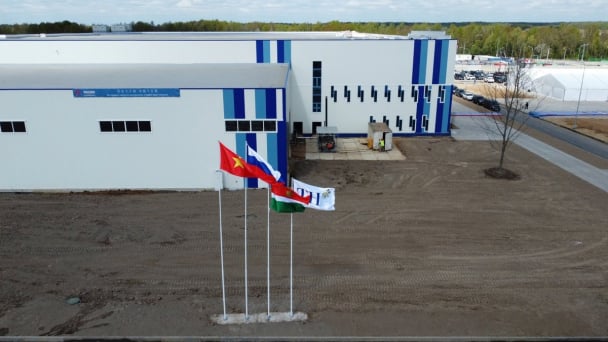
(VAN) Vietnam’s TH Group officially put its high-tech fresh milk processing plant into operation in the Russian Federation, marking a historic moment as the first TH true MILK cartons were produced in Russia.
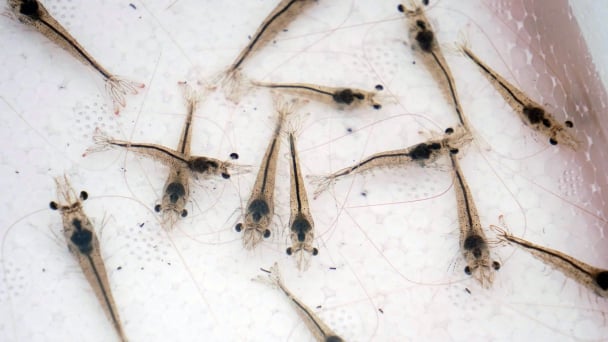
(VAN) Use of high-quality broodstock and biotechnology is regarded as the most effective approach to ensuring sustainable and economically viable shrimp aquaculture ahead of climate change and the emergence of increasingly intricate disease patterns.
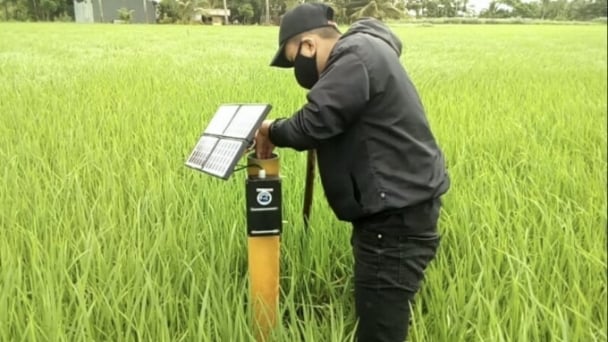
(VAN) Carbon farming is a form of agricultural practices that helps absorb more greenhouse gases than it emits, through smart management of soil, crops, and livestock.

(VAN) This is a key content of the Memorandum of Understanding recently signed between the Vietnam Fisheries Society and Kunihiro Inc of Japan.
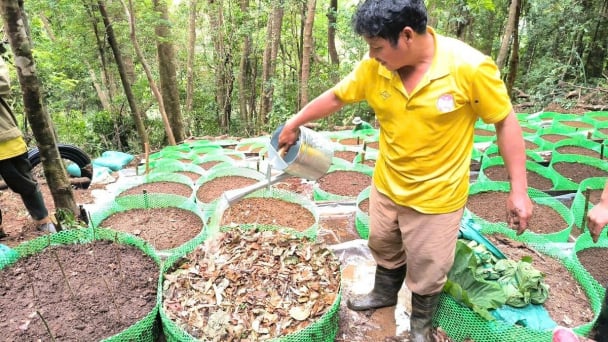
(VAN) To achieve the goal, local authorities and businesses in Kon Tum province have fully prepared the necessary conditions for the new Ngoc Linh ginseng planting season.
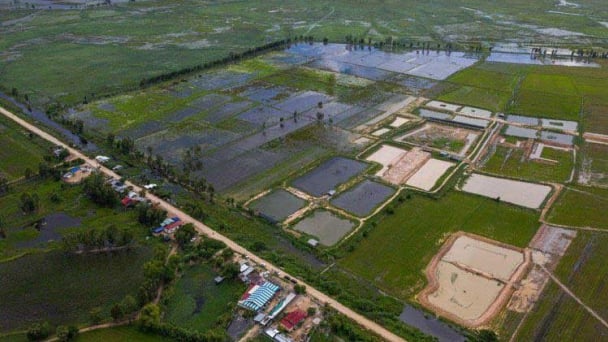
(VAN) Jiangsu province is gearing up to host training programs in Phnom Penh, the capital of Cambodia, this year to establish the Fish and Rice Corridor.
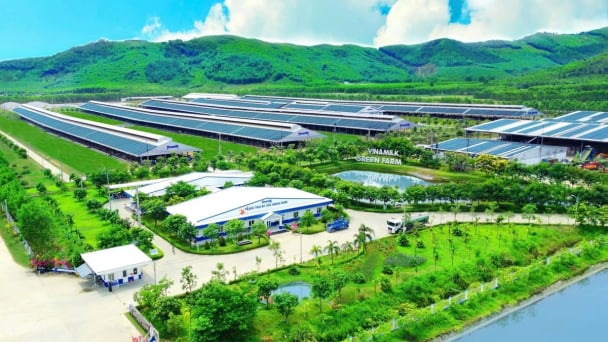
(VAN) Le Hoang Minh, representing Vinamilk, shared the company's experience in energy saving and green energy transition for production at a workshop held during the P4G Summit.